Ciqikou Ancient Town: A Local’s Guide to Chongqing’s Living History
Step back in time with us. Imagine bustling flagstone alleys. The air is thick with the sweet sizzle of fried dough twists and the spicy kick of chili oil. Traditional wooden buildings with upturned eaves lean over the crowded lanes. This isn’t a movie set. This is Ciqikou Ancient Town, the vibrant, beating heart of old Chongqing.
For over a thousand years, this town has thrived on the banks of the Jialing River. It was once a vital port, famous for its porcelain production. Today, it’s a living museum. A place where you can taste, see, and feel the history of this unique mountain city.
At Travel China With Me, we’ve explored every corner of Ciqikou. We’ve sipped tea in its oldest teahouses and chatted with artisans who have practiced their crafts for generations. It’s more than just a tourist spot for us. It’s a cherished piece of Chongqing’s soul. We want to share our firsthand experience and help you discover the real Ciqikou, beyond the main street crowds. This guide is your key to unlocking its secrets.
Quick Facts
Chinese Name: 磁器口古镇 (Cíqìkǒu Gǔzhèn)
Location: Shapingba District, Chongqing, China
Established: Originally built during the Song Dynasty (960-1279)
Famous For: Porcelain trade history, well-preserved architecture, local street food
Best For: History buffs, foodies, photographers, cultural explorers
Entrance Fee: Free to enter the town
Opening Hours: All day, but shops typically operate from 9:00 AM to 10:00 PM
Time Needed: 3 to 5 hours
Table of Contents
History and Cultural Significance: More Than Just an Old Town
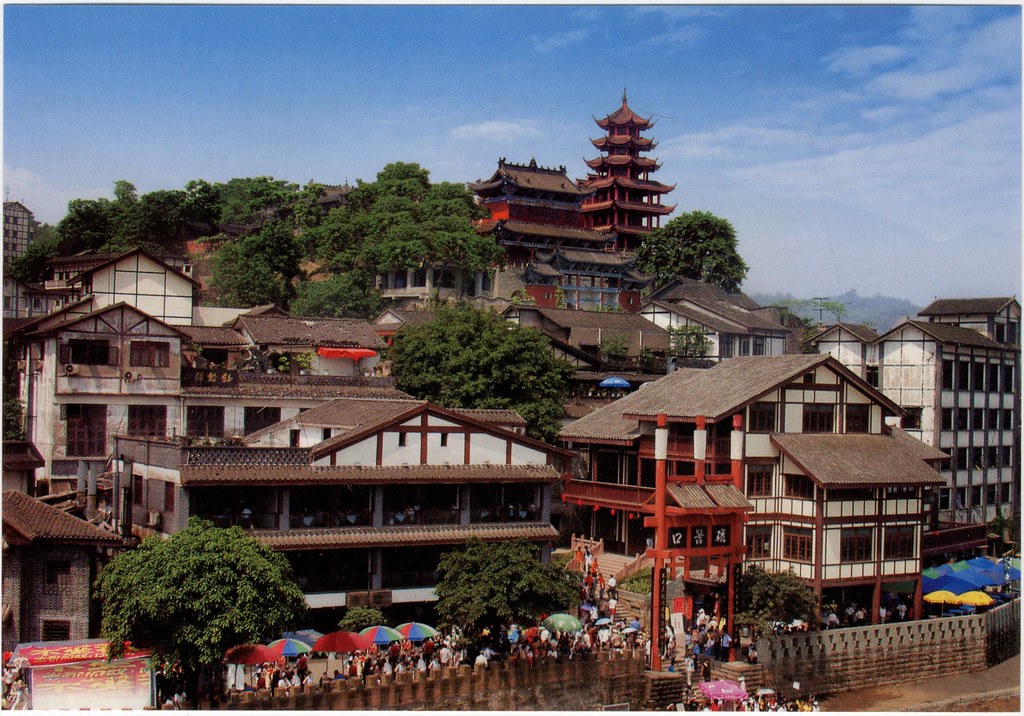
Ciqikou’s story is deeply tied to the water. Its original name was Longyin Town (龙隐镇), or “Dragon’s Hiding Town.” Legend says the Jianwen Emperor of the Ming Dynasty took refuge here after being overthrown. The name itself whispers of secrets and imperial history, a tale local teahouse storytellers still recount with great enthusiasm. This foundational myth gives the town a layer of romance and intrigue right from its inception.
The Porcelain Port
The town truly flourished during the Ming and Qing Dynasties (1368-1912). Its location on the Jialing River was perfect for trade. It became a major hub for goods traveling into and out of Sichuan. The town became famous for producing beautiful blue and white porcelain, which was both durable and elegant. So famous, in fact, that its name changed to Ciqikou, which means “Porcelain Port.” For centuries, the clinking of porcelain filled the air as it was loaded onto boats, destined for other parts of the country. This commercial success is what funded the construction of the beautiful buildings we see today.
A Wartime Haven
During the Second Sino-Japanese War (1937-1945), Chongqing became China’s provisional capital. The main city faced relentless bombing. Many people, including famous artists and scholars like painter Xu Beihong and cartoonist Feng Zikai, fled to the relative safety of Ciqikou. This influx of intellectuals transformed the town into a vibrant cultural center, a legacy that adds depth to its historic streets. The teahouses became hubs of intellectual debate and artistic creation. This period solidified Ciqikou’s place not just in Chongqing’s history, but in the history of the entire nation.
Why Is Ciqikou Ancient Town Worth Visiting?
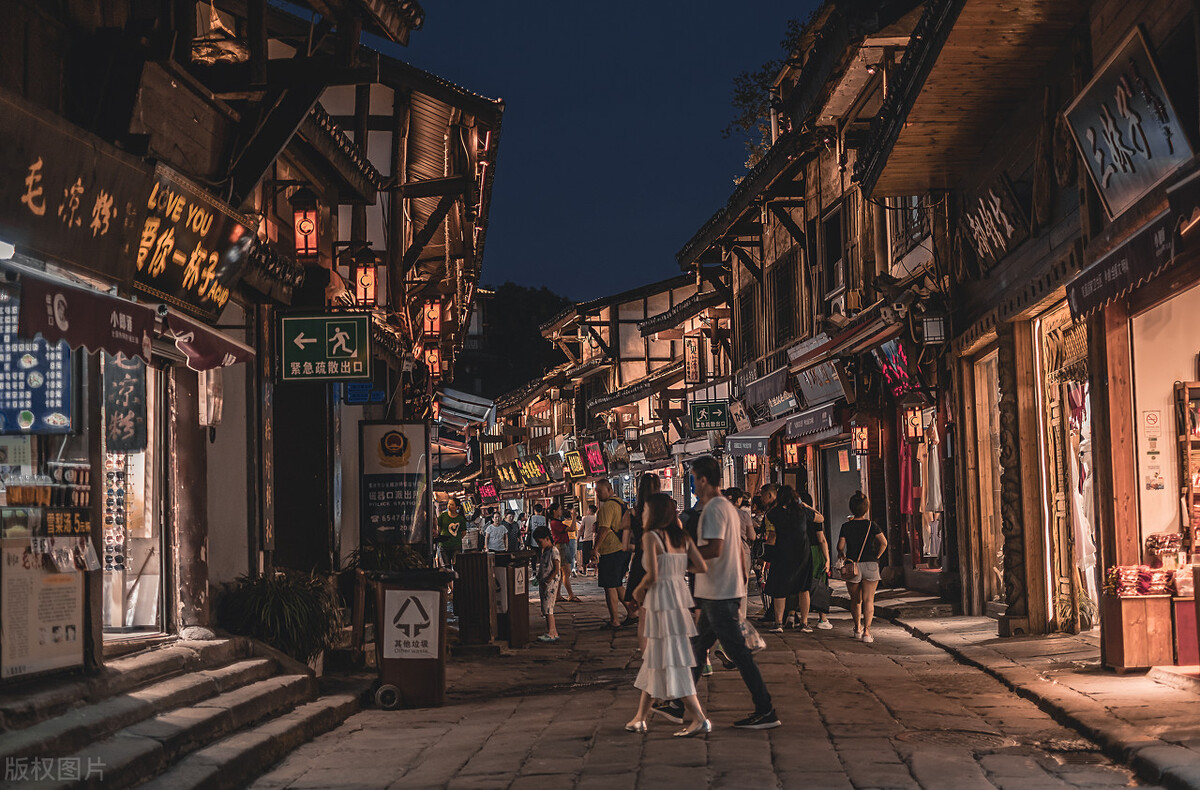
In a country full of ancient towns, what makes Ciqikou special? We believe it’s the authenticity. While it’s a popular destination, it has managed to keep its soul. It isn’t just a collection of souvenir shops. It’s a living community where locals still reside, their daily lives unfolding amidst the visitors.
A Sensory Experience: Ciqikou engages all your senses. You’ll smell the complex, spicy aroma of Chongqing hotpot base being sold on the street. You’ll hear the rhythmic, percussive hammering of artisans making peanut brittle by hand. You’ll taste the uniquely numbing sensation of Sichuan peppercorns in local snacks, a feeling known as málà (麻辣).
Architectural Charm: The town is a maze of “Diaojiaolou” buildings. These are unique stilted houses, a brilliant architectural solution to Chongqing’s challenging geography. Built on sturdy wooden stilts, these structures allow homes to cling to steep hillsides and riverbanks. This design also cleverly lifts the living quarters off the damp ground, providing better ventilation in Chongqing’s humid climate. Walking through the alleys feels like stepping into a traditional Chinese ink painting.
A Culinary Adventure: Ciqikou is a paradise for food lovers. It’s the best place to sample Chongqing’s most famous snacks in one place. From savory to sweet, and from numbingly spicy to subtly fragrant, there’s a new flavor to discover around every corner.
Highlights: The Unmissable Sights of Ciqikou
Navigating Ciqikou can be overwhelming. The town is a web of twelve main lanes paved with flagstones. Here are the must-see spots we always take our guests to, based on our countless visits.
Baolun Temple (宝轮寺)

Tucked away from the main thoroughfare is Baolun Temple. This tranquil sanctuary offers a peaceful escape from the bustling crowds. The temple has a history of over 1,500 years, even older than the town itself. Upon entering, you’ll notice the scent of sandalwood incense perfuming the air. The main hall, known as the Mahavira Hall, houses impressive golden statues of the Buddha triad. But the true treasure is the large, serene porcelain Buddha, a rare survivor from the Ming era, whose calm expression seems to watch over the town. Notice the detailed carvings on the wooden beams and the peaceful courtyard, a perfect spot for quiet reflection away from the main street’s energy. It’s a reminder of the town’s deeper spiritual roots beyond its commercial history.
The Twelve Lanes of Old Ciqikou

The main street is where most of the action is. But the real magic lies in the smaller, branching alleys. Each of the twelve historic lanes has its own character. Some are filled with food stalls, while others are home to quiet artisan workshops.
- Zhengjie (Main Street): This is the busiest artery. It’s lined with shops selling Chen Mahua (fried dough twists), peanut brittle, and chili products. It’s a full-frontal assault on the senses in the best way possible.
- Wenchang Lane: Look for old teahouses and small art galleries here. It has a more relaxed, cultural vibe. We’ve found some beautiful, locally made calligraphy brushes and paintings in this lane.
- Fulushou Lane: Named for the three gods of fortune, prosperity, and longevity, this lane is a great spot for photos. You’ll often find shops selling traditional red lanterns, paper cuttings, and other good luck charms.
Our advice? Get intentionally lost. Wander down the narrowest path you can find. You might stumble upon a hidden courtyard where locals are playing mahjong or a family-run noodle shop that has been there for decades.
Hanlin Academy (翰林院)
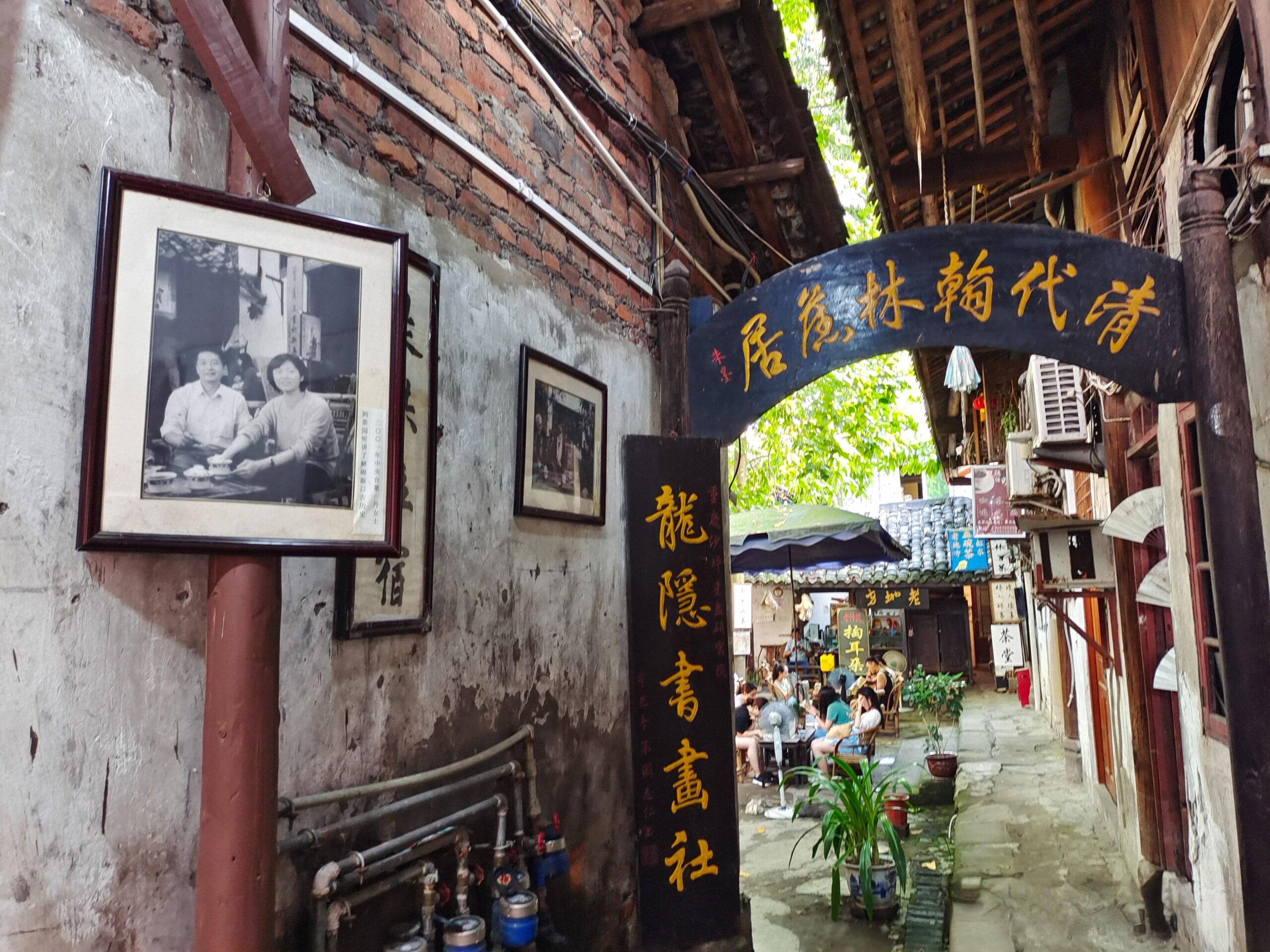
The Hanlin Academy in Ciqikou was a branch of the imperial academic institution. It served as a place for scholars and officials. Today, it houses a teahouse and a small museum. You can see exhibits on the local culture and the famous scholars who once lived here. We recommend ordering a pot of tea and sitting in the courtyard. It’s a quiet, scholarly space that provides valuable context to the town’s intellectual history, especially its important role during the war.
The Old Riverfront (Jialing River Wharf)
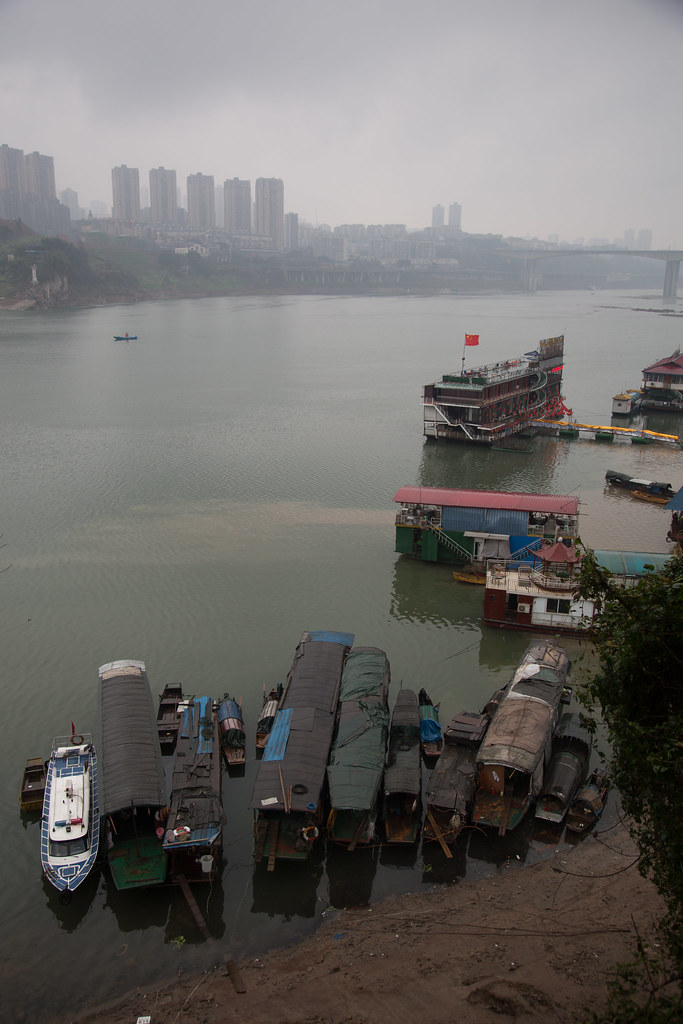
Walk to the end of the main street to reach the old wharf. This is where the porcelain was once loaded onto boats. From here, you can see the modern city of Chongqing across the Jialing River. The contrast between the old town and the new skyline of glittering skyscrapers is striking. It’s a powerful visual reminder of Chongqing’s rapid development. We find this spot is best at dusk, as the city lights begin to twinkle and the river traffic slows.
Special Experience: More Than Just Sightseeing
To truly understand Ciqikou, you need to dive in and participate. These are some of our team’s favorite hands-on experiences.
Watch the Making of Chen Mahua
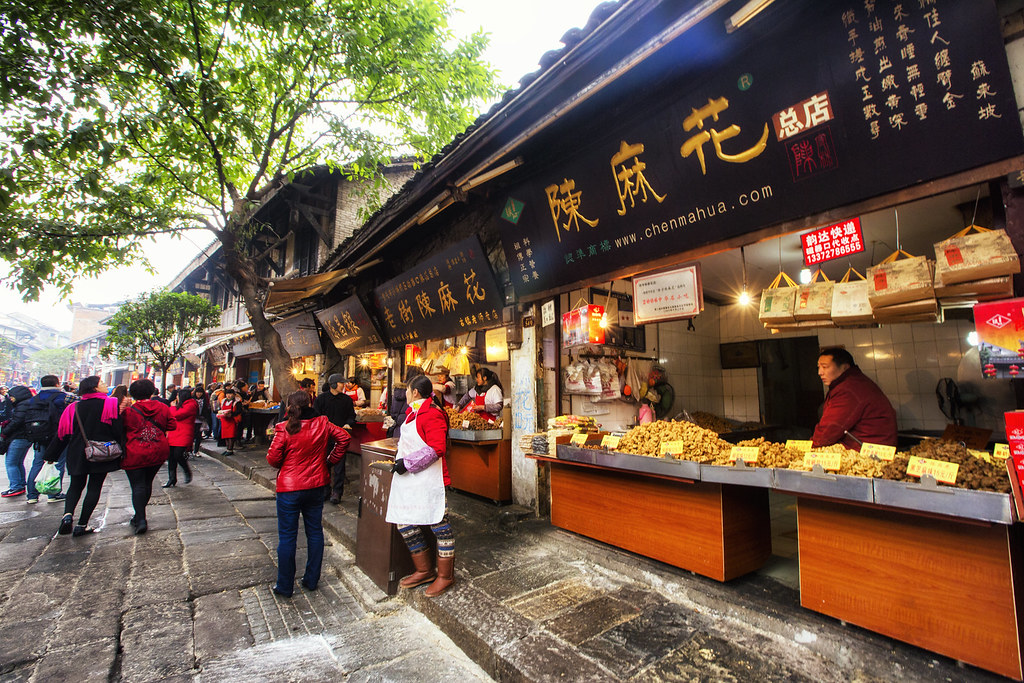
You can’t visit Ciqikou without trying Chen Mahua (陈麻花). These are crispy, fried dough twists, and they are a local obsession. Several famous brands line the main street, and you can watch the entire process. Workers skillfully twist the dough into intricate braids before frying it in huge vats of oil. They come in many different flavors, from the original sweet and savory to more modern takes like spicy Sichuan peppercorn, seaweed, and black sesame. Buying a bag of freshly made Mahua is a quintessential Ciqikou experience.
A Traditional Teahouse Performance
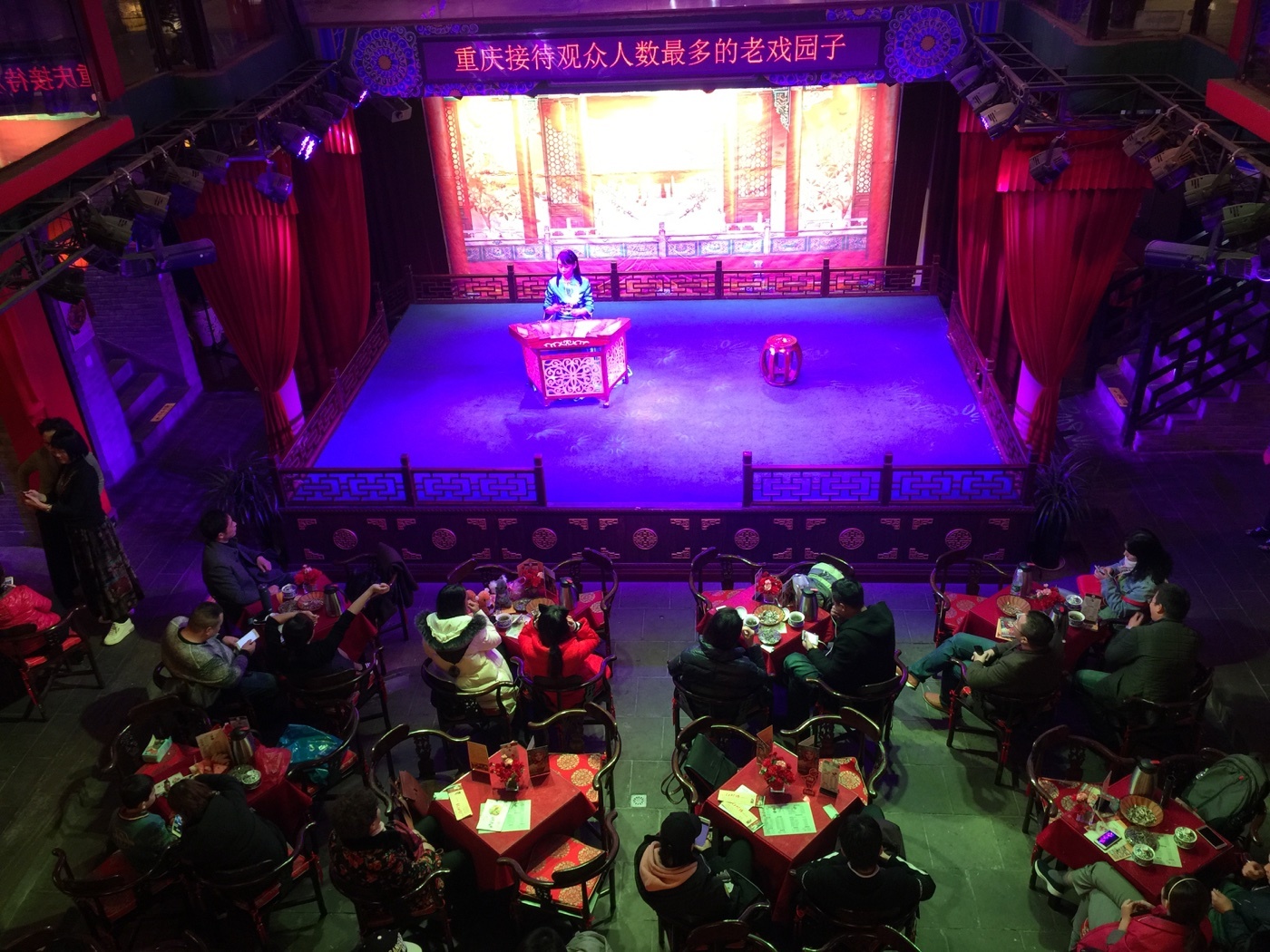
Step into an old teahouse like the Shuchang Teahouse (书场茶馆). This isn’t just about drinking tea. It’s about experiencing a piece of local culture. Order a cup of gaiwan tea and settle in. Often, you can enjoy traditional Sichuan Opera performances, storytelling, or folk music. One of the most captivating performances you might encounter is the legendary Sichuan Opera art of Bian Lian, or ‘Face-Changing.’ With the flick of a fan or a turn of the head, performers instantly change their brightly colored masks in a seamless, magical display that has baffled audiences for centuries. It’s a dramatic and visually stunning art form that embodies the fiery spirit of Sichuan culture, and seeing it in the intimate setting of an old teahouse is an unforgettable experience.
Discover Local Crafts
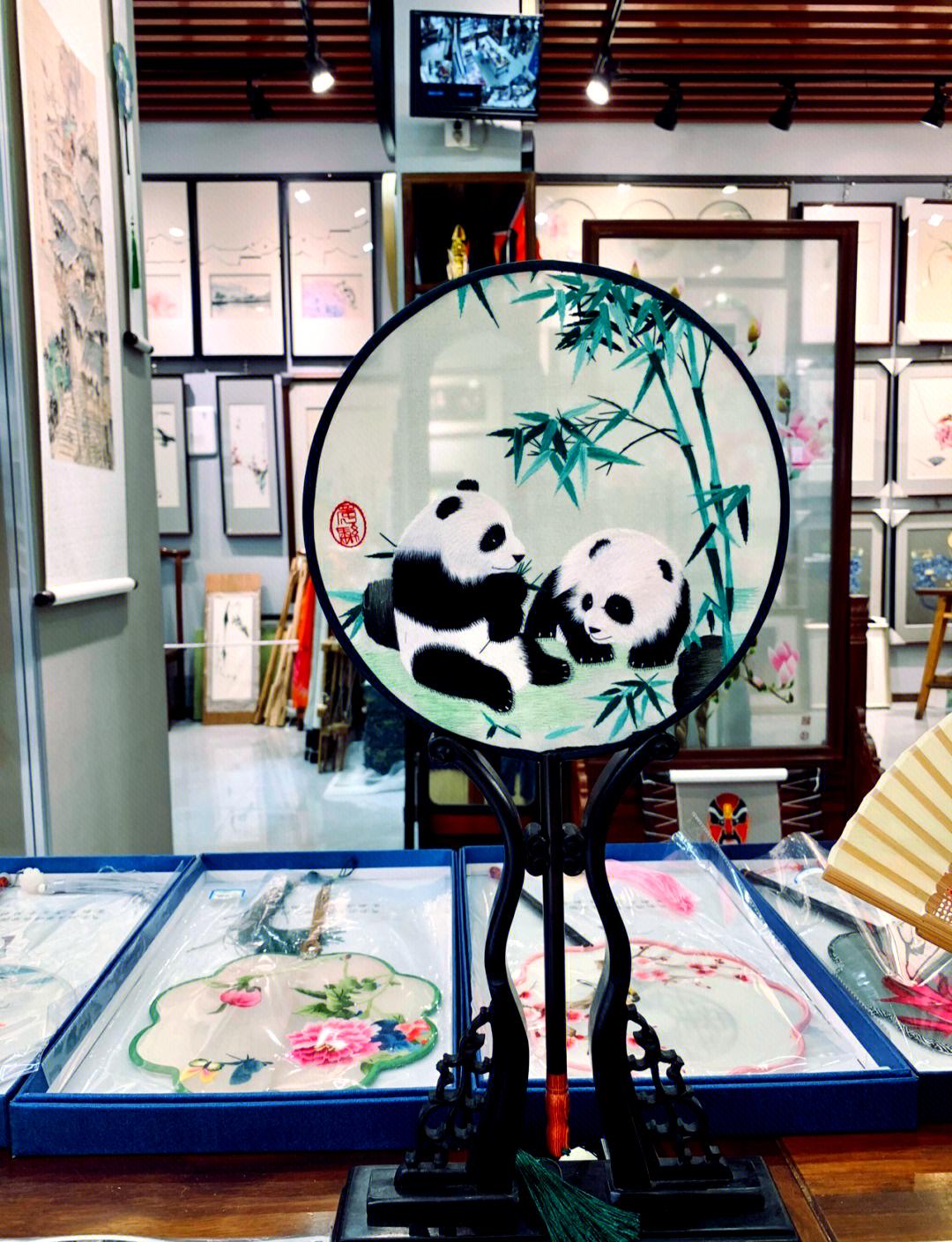
Ciqikou is home to many skilled artisans. You can find shops demonstrating traditional crafts.
- Shu Embroidery (蜀绣): Watch masters create stunningly detailed silk embroideries, a craft recognized as a national intangible cultural heritage.
- Sugar Painting (糖画): See artists use hot liquid sugar to draw intricate animals and figures on a marble slab. It’s art you can eat!
- Paper Cutting (剪纸): Find delicate and complex designs cut from red paper, a popular folk art in China.
We always encourage our guests to talk to the artisans. They are often happy to share their stories and the history of their craft.
How to Visit: A Food Lover’s Walking Tour
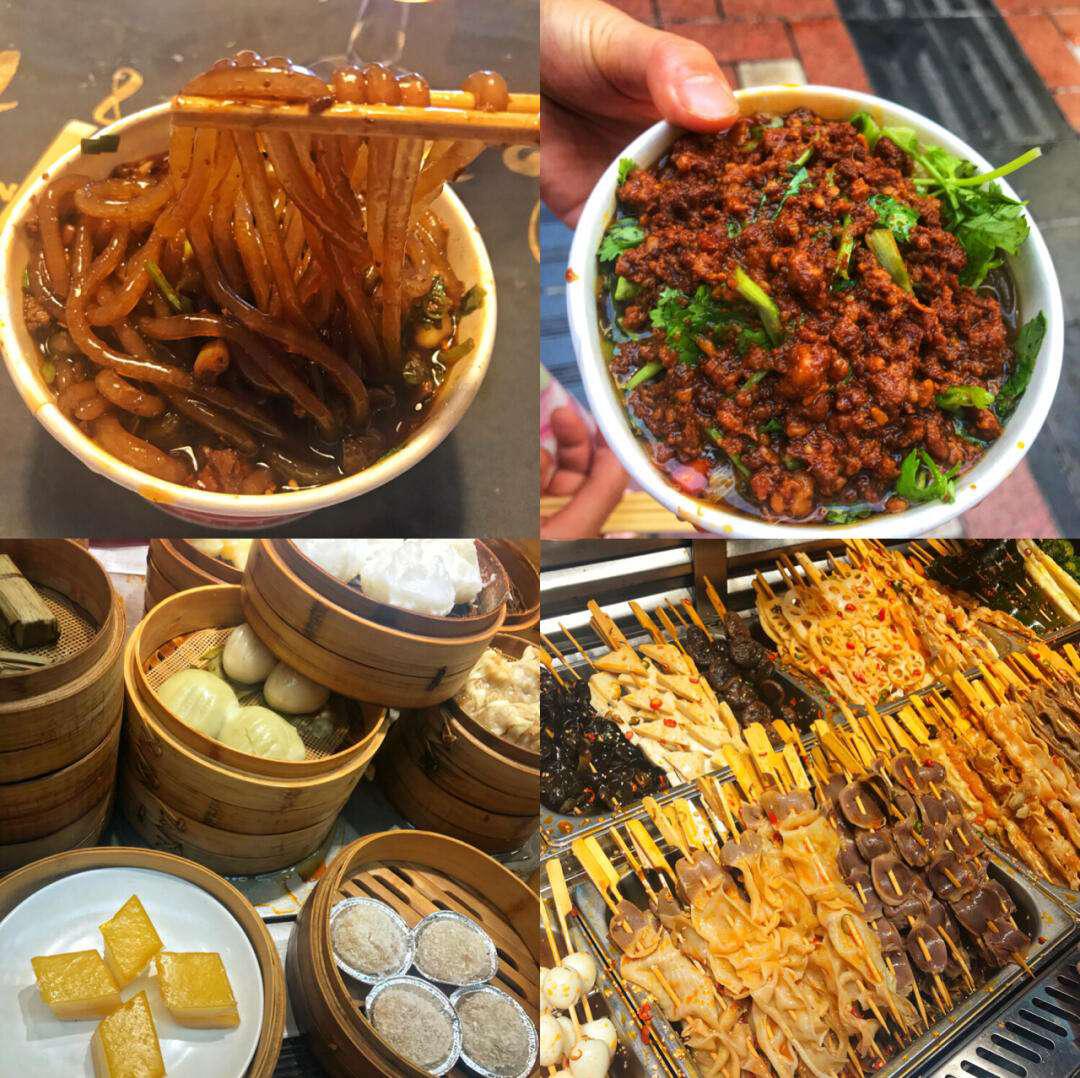
Ciqikou is best explored on foot and with an empty stomach. Here is our recommended route to experience the best of its culinary delights.
Starting Point: The main entrance of Ciqikou Ancient Town.
- First Stop: Chen Mahua (陈麻花)
- Right at the entrance, you’ll see several shops. Grab a small bag of mixed flavors to snack on as you walk. The slightly salty and sweet one is a classic.
- Second Stop: Fried Potato Skewers (炸土豆)
- Walk down the main street. You’ll smell them before you see them. Small potato balls are deep-fried and then coated in a mix of chili powder, Sichuan peppercorns, and other spices. They are addictive.
- Third Stop: Maoxuewang (毛血旺)
- For the more adventurous eater, find a small restaurant serving Maoxuewang. This is a famous Chongqing dish. It’s a fiery stew made with duck blood, tripe, and various meats and vegetables in a spicy broth. It’s a true taste of the city.
- Fourth Stop: Jiang Tuan Tuan (江团团)
- Look for vendors selling these glutinous rice balls. They are often filled with sweet black sesame or peanut paste and coated in soybean powder. They offer a nice, sweet contrast to the spicy snacks.
- Fifth Stop: Chongqing Hot and Sour Noodles (重庆酸辣粉)
- Find a small noodle shop in a side alley. A bowl of these sweet potato noodles in a savory, sour, and spicy broth is the perfect light meal. It’s a comforting and flavorful dish that locals eat regularly.
- Final Stop: A Riverside Teahouse
- After all that food, head towards the river. Find a teahouse with a view. Order some local green tea to relax and digest. This is the perfect way to end your culinary tour of Ciqikou.
Best Time to Visit Ciqikou
We recommend visiting on a weekday morning. This is when the town is least crowded. You can see the shopkeepers setting up for the day and experience a more relaxed atmosphere. By midday, especially on weekends and public holidays, the main streets can become extremely crowded.
- Spring (March to May): The weather is pleasant. It’s a great time to explore the town on foot.
- Autumn (September to November): This is perhaps the best season. The temperatures are comfortable, and there is less rain.
- Summer (June to August): Chongqing is known as one of China’s “furnace cities.” It can be very hot and humid. Visit early in the morning or late in the afternoon if you come during this time.
- Winter (December to February): It’s chilly and damp, but there are fewer tourists. You can have a more intimate experience of the town.
Planning Your Visit: The Practical Details
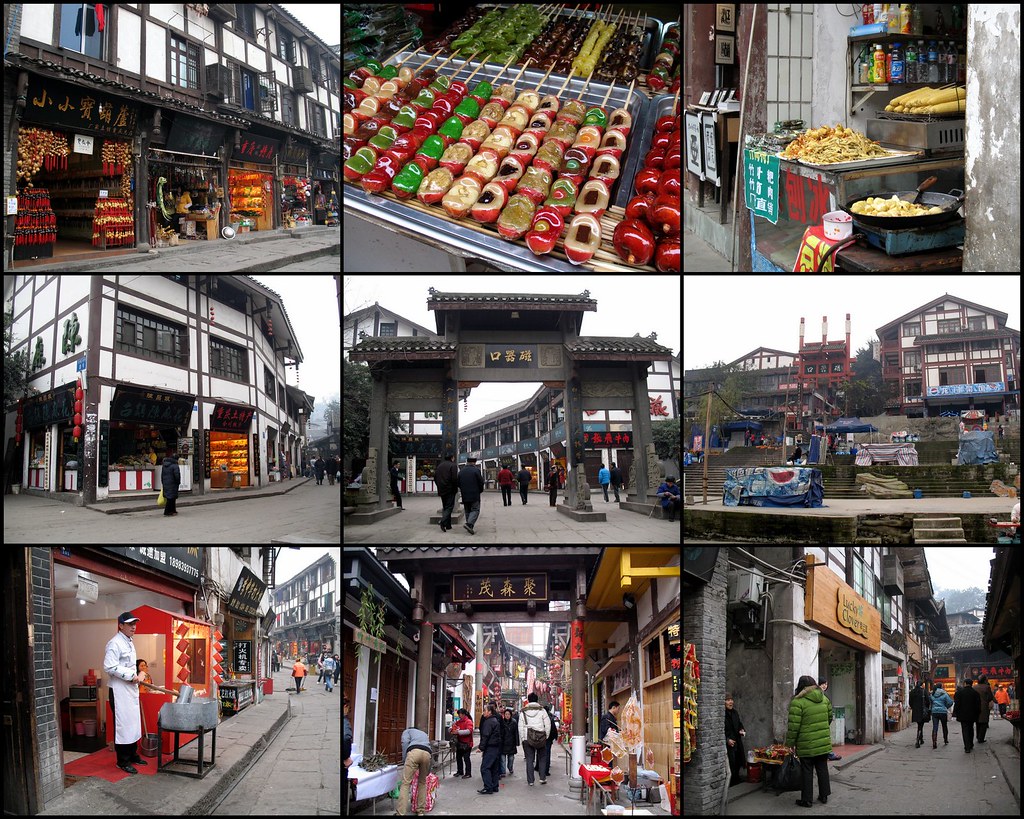
Getting to Ciqikou is straightforward. Here’s a breakdown of everything you need to know.
Getting There
Transportation | Details | Our Recommendation |
|---|---|---|
Chongqing Metro | Take CRT Line 1 to Ciqikou Station (磁器口站). Use Exit 1. This is the most convenient and efficient way. The station is just a short walk from the town’s main entrance. | This is our top choice. It’s fast, cheap, and avoids the city’s notorious traffic. |
Bus | Numerous city buses stop near Ciqikou, including routes 202, 220, 237, 467, 808, and 843. | Good for those who enjoy seeing the city from a bus, but it can be slower than the metro. |
Taxi/Didi | A taxi or ride-hailing service from the city center (like Jiefangbei) will take about 30-40 minutes, depending on traffic. The cost is typically around 30-50 CNY. | A comfortable option, especially for groups or families. Be prepared for potential traffic delays. |
Opening Hours and Tickets
- Entrance Fee: The town itself is free to enter.
- Opening Hours: The ancient town is open 24/7. However, the shops, restaurants, and teahouses generally operate from 9:00 AM to 10:00 PM. Some smaller attractions within the town, like Baolun Temple, may have specific hours and a small entrance fee (around 5 CNY). We advise checking on-site.
Practical Travel Tips from Our Experts

After countless trips to Ciqikou, we’ve gathered some insider tips to make your visit smoother and more enjoyable.
- Wear Comfortable Shoes: You will be doing a lot of walking on uneven stone paths. Comfortable footwear is essential.
- Bring Cash: While major payment apps like Alipay and WeChat Pay are widely used, many smaller street food vendors prefer cash. It’s always good to have some small bills.
- Stay Hydrated: Especially in the summer, the crowds and heat can be draining. Carry a bottle of water with you.
- Be Patient with Crowds: Ciqikou is popular for a reason. On weekends, the main street can be shoulder-to-shoulder. Embrace the lively atmosphere, but if you need a break, duck into a side lane or a teahouse.
- Bargain Respectfully: For souvenirs and crafts, it’s acceptable to bargain a little. Do it with a smile and be reasonable. For food, prices are generally fixed.
- Use the Restrooms: Public restrooms are available, but they may not always be up to Western standards. It’s a good idea to carry your own tissues and hand sanitizer.
- Watch Your Belongings: Like any crowded tourist area, be mindful of your valuables. Keep your bag or backpack in front of you in dense crowds.
Real Traveler Reviews: What People Are Saying
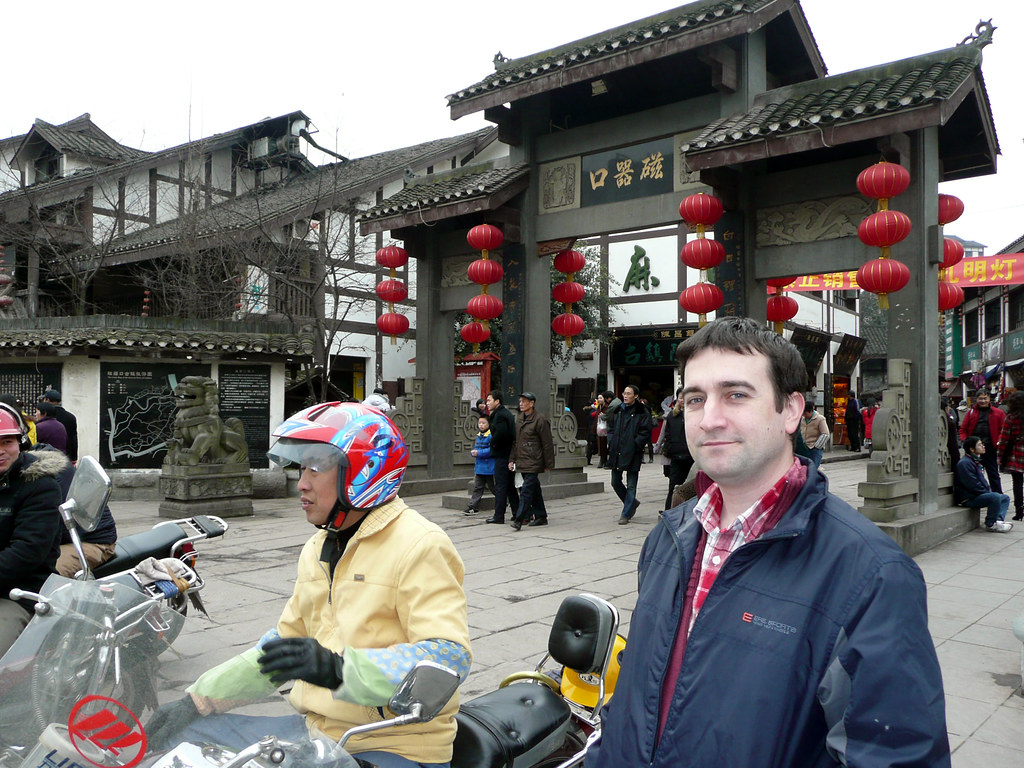
To give you a balanced view, we’ve analyzed recent traveler feedback from popular review sites and our own client surveys.
- “An incredible atmosphere. It really feels like you’ve stepped back in time. The street food is amazing!”
- “Loved watching the candy makers and the chili sellers. So much to see and do. A must-visit in Chongqing.”
- “The architecture is beautiful. I spent hours just wandering the small alleys and taking photos.”
- “It gets incredibly crowded, especially on weekends. It can be hard to move around.”
- “Some parts feel very commercialized with similar souvenir shops. You have to search for the authentic spots.”
- “The main street is noisy. The side streets are much more pleasant.”
Our takeaway is that most visitors love the vibrant atmosphere and food but recommend going at off-peak times to avoid the worst of the crowds. Exploring beyond the main street is key to a rewarding experience.
Frequently Asked Questions
1. Is Ciqikou Ancient Town free?
Yes, entrance to the town itself is completely free. Some specific attractions inside, like certain temples or small museums, may have a nominal entrance fee.
2. How much time should I spend in Ciqikou?
We recommend planning for at least half a day (3 to 5 hours). This gives you enough time to walk the main streets, explore some side alleys, see the key sights, and enjoy some local snacks without rushing.
3. Is Ciqikou a tourist trap?
It can feel commercialized on the main street, which is packed with souvenir shops and popular food chains. However, we firmly believe it’s not a trap. The town’s history is genuine, the architecture is authentic, and by venturing into the quieter lanes and teahouses, you can find a truly authentic cultural experience.
4. What is the best food to try in Ciqikou?
You must try Chen Mahua (fried dough twists), hot and sour noodles, and the various snacks coated in chili powder. For a full meal, try a local restaurant serving Maoxuewang or spicy chicken dishes.
5. Is Ciqikou suitable for children and elderly visitors?
Yes, but with some considerations. The stone-paved lanes can be uneven, which might be difficult for those with mobility issues. The crowds can also be overwhelming for small children. We suggest visiting on a weekday and taking frequent breaks in the many teahouses.
6. Is Ciqikou accessible for wheelchair users or those with mobility issues?
Candidly, Ciqikou can be challenging. The main paths are paved with uneven flagstones, and there are many stairs, especially leading down to the river or into smaller alleys. While the main street is relatively flat, exploring the town fully would be difficult. Those with mobility concerns should proceed with caution and stick to the main thoroughfare.
A Personal Note From Our Team

Many of us on the team will never forget our first visits to Ciqikou. It was a misty Chongqing morning, and the town was just waking up. The smell of coal fires and freshly fried dough hung in the air. As we walked down a quiet side alley, we saw an elderly man meticulously painting a fan in a small, open-fronted shop. He smiled and gestured for us to come closer. We didn’t share a language, but through gestures, he explained his craft.
That moment, for us, is the essence of Ciqikou. It’s not just about the famous sights or the bustling crowds. It’s about these small, human connections and the living history you find when you take the time to look for it.
Our mission is to help you find those moments. We want you to see beyond the surface, to taste the authentic flavors, and to feel the deep history of this incredible place. Ciqikou Ancient Town is a treasure, and we are thrilled to help you discover it. We hope this guide helps you plan an unforgettable journey into the heart of old Chongqing.





